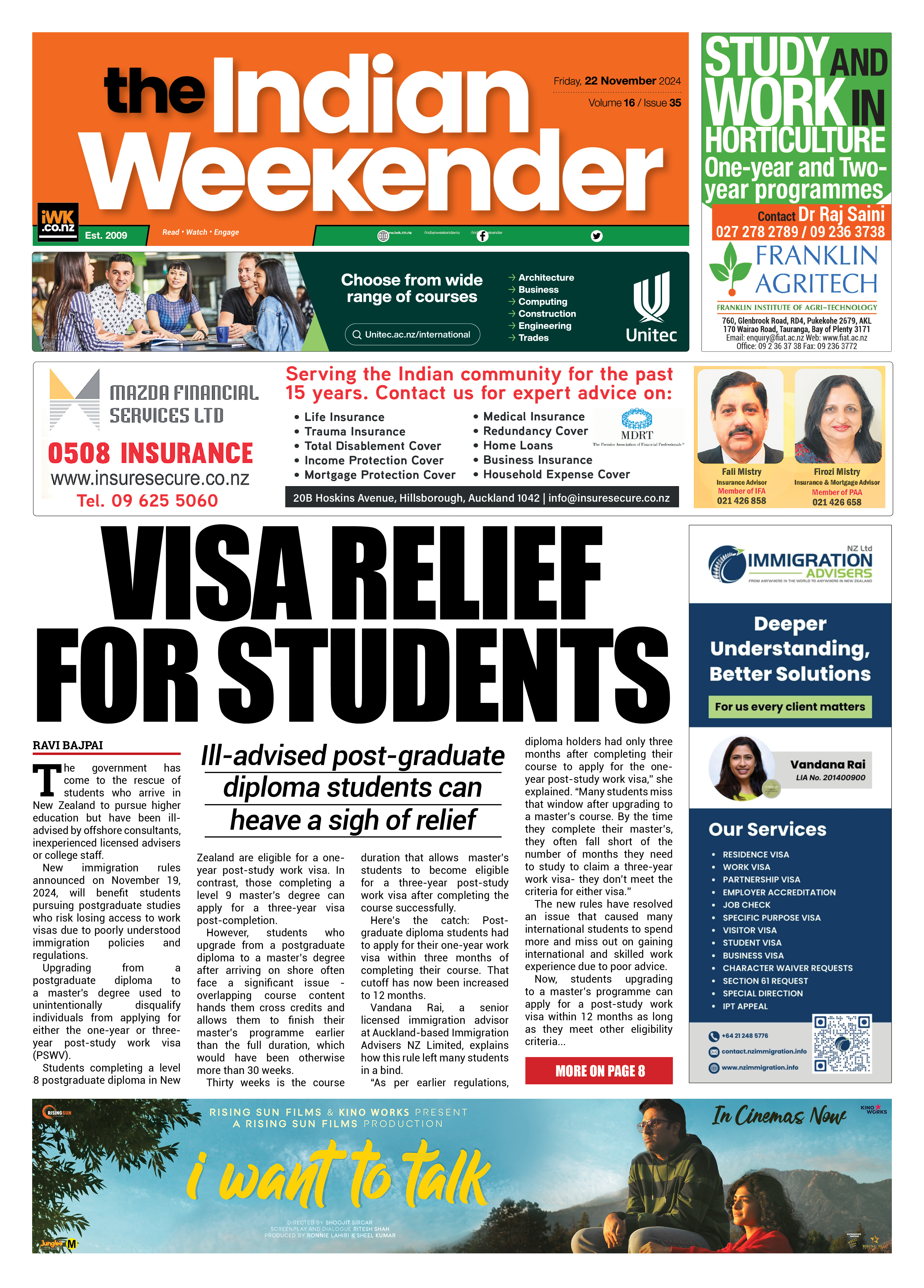India as a global power

India is the third-largest global economy when measured by purchasing-power parity, and she boasts of a large and growing annual defence budget that is expected to become the world’s fourth largest within the next five years. India is also expected to become the fastest growing large economy over the next few years, taking over that coveted spot from China that held this position for the past three decades. It is not surprising that the world is looking curiously at India. But the question is, what does India’s arrival on the global stage mean for India, for her Asian neighbours, and for the world at large? Will India be able to fulfil the expectations it has generated? And for that matter, how should New Zealand respond to this new phenomenon in global politics? To discuss all these questions the New Zealand India Research Institute held its Third International Conference in Wellington on 25-26 August. Over two days, twelve academic experts from across the world critically addressed those issues, facilitating our understanding of ‘India as a global power in the twenty-first century’.
Hon Steven Joyce, Minister for Tertiary Education, Skills and Employment, in his opening speech at the conference emphasized the importance of a rising India for world politics and economy, as well as for New Zealand. It opens up huge opportunities, but New Zealand, he reminded, must think innovatively to take advantage of them. About twenty thousand Indian students have come to this country over the last year. This is a welcome growth, he mentioned, but New Zealand should do more to develop deeper educational and research ties between the two countries, and may develop other plans for skills training for the Indian youth preparing them for a modern job market. He congratulated the New Zealand India Research Institute for the good work it has been doing in strengthening such ties.
In the main session of the conference, Professor Ian Hall of Griffith University, in his keynote speech, spoke on the recent shifts in Indian foreign policy under Narendra Modi. Having reinvigorated India’s so-called ‘soft power’, Modi is developing a new cultural agenda in Indian public diplomacy. His success in securing United Nations’ agreement for an International Yoga Day is one aspect of this agenda, which builds upon earlier attempts by Indian Prime Ministers to make India a ‘normative power’ in world politics. However, it still needs to be seen how this strategy based on insistence on the excellence of India’s ancient civilization will ultimately help India establish her status as a real global power.
The use of ‘soft-power’ and social media in diplomacy as well as domestic politics in recent years by the Modi government has been a major focus of a number of papers at the conference. Ronojoy Sen of the National University of Singapore showed how Modi used various cultural symbols and social media in his election campaign. Parama Palit, also from Singapore, analyzed how similar symbols have been effectively used to connect to the Indian Diaspora during Modi’s foreign visits. However, the question is, while these cultural agendas have been able to strike a chord with the Diasporas, have they been able to change global perceptions about India? And here the empirical research conducted in Southeast Asia by Adrian Athique of the University of Waikato shows that among the general public of this region India is still largely stuck with the image of a poor third world country. In other words, more needs to be done beyond the use of ‘soft-power’.
A number of papers therefore reflected on the economics of Modi’s foreign policy and how effective these economic policies have been. As Amitendu Palit of the National University of Singapore observed, global media view of India changed drastically during the first year of the Modi government, and rightly so. But this enthusiasm has started waning as outcome has fallen short of expectation. Sustained economic growth will not be possible without substantial reform of the institutions, and here there are several difficult obstacles. And unless economic growth can be kick-started and poverty alleviation accelerated, argued Srikanta Chatterjee of Massey University, it will be difficult for her to overtake China. Rajat Ganguly of Murdoch University also argued that it would be difficult to outstrip China in terms of ‘hard-power’ (military hardware) and so India needs to take recourse to careful diplomacy.
In the context of diplomacy, India’s foreign policy in recent years has undergone several significant shifts in relation to several global powers, like the USA, China and Israel. Manjeet Pardesi of Victoria University and Ashok Sharma of the University of Melbourne showed how India’s relationship with China and USA has shifted over the last few years, as she has moved closer to USA, but also tries to play a careful balancing game with China. Nicolas Blarel of Leiden University discussed the other important shift in India’s policy, i.e., towards the Middle East—from her full-throated support for the Palestinian cause to a more pragmatic relationship with Israel. It is believed that more will be revealed during Modi’s coming visit to Israel.
Finally, in the open forum on Indo-New Zealand relations, it was agreed that New Zealand should take a more focused approach towards India. Modi’s ‘Make in India’ policy identifies 25 sectors where India needs foreign investment. In several of these sectors New Zealand has special expertise, and it should focus on those areas alone. The two countries may also develop useful security relationship by situating themselves within the broader security architecture of the Indo-Pacific region. The two-day conference was attended by about sixty participants from various sectors.





